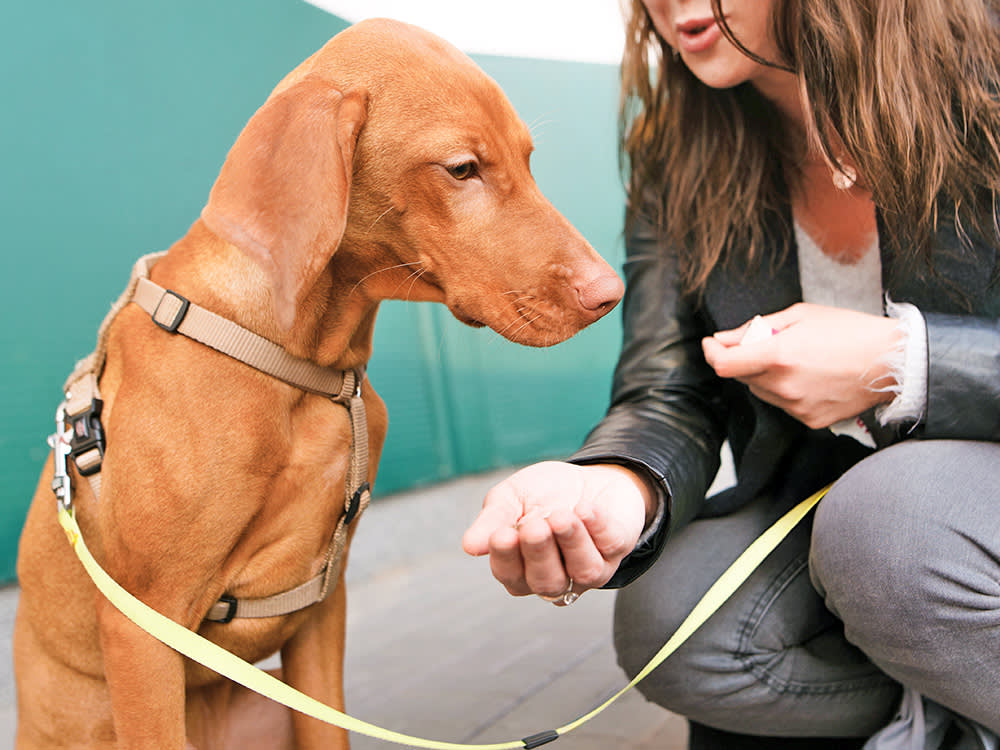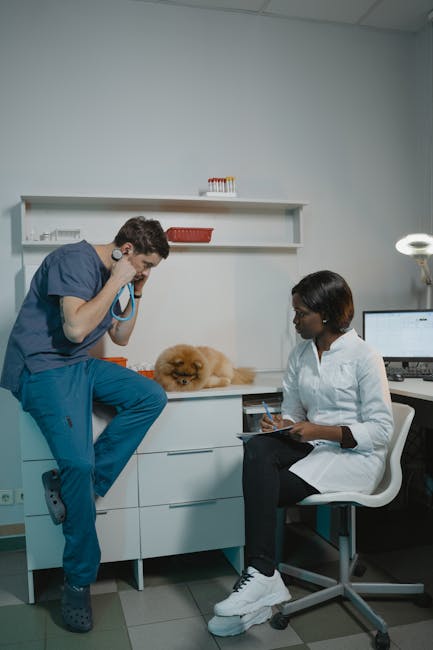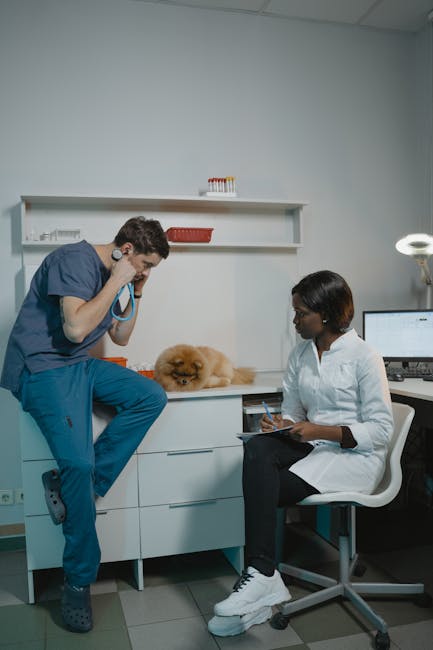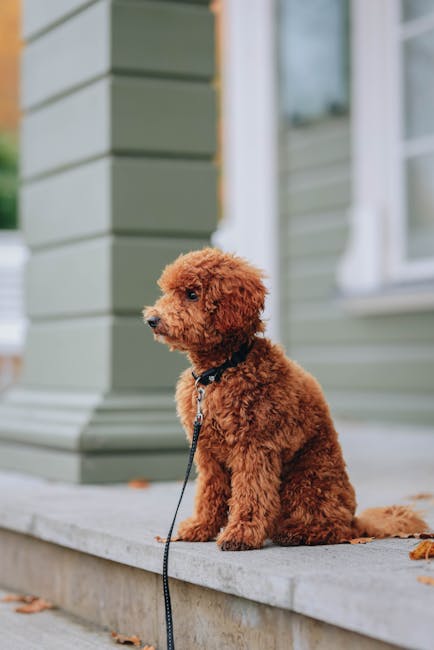Training your dog in basic obedience can transform your daily life together. Imagine having a furry friend who listens when you call, walks calmly by your side, and responds to simple commands without hesitation.
You might think this is hard or time-consuming, but with the right steps, it can be easier than you expect. You’ll discover clear, simple techniques to teach your dog good behavior that lasts. Ready to build a stronger bond and enjoy peaceful moments with your dog?
Keep reading, and let’s get started!
Preparing For Training
Embarking on the journey of training your dog in basic obedience is an exciting venture that requires preparation and dedication. Before diving into the actual training sessions, setting the stage for success is crucial. This involves choosing the right environment, gathering essential tools, and setting realistic goals to ensure both you and your furry friend have a rewarding experience.
Choosing The Right Environment
The environment where you train your dog plays a pivotal role in their learning process. Select a space that’s free from distractions to help your dog focus on your commands. A quiet backyard or a spacious room inside your home can be ideal.
If you live in a bustling area, consider training during quieter times. This helps maintain your dog’s attention and reduces chances of them getting sidetracked by other activities.
Think about the area’s safety too. Ensure there are no hazards that might harm your dog, allowing you to concentrate on teaching rather than worrying about their well-being.
Gathering Training Tools
Having the right tools at your disposal simplifies training and enhances effectiveness. Start with basic tools like a sturdy leash and collar. These are fundamental for controlling your dog and guiding them through exercises.
Treats are another must-have. They serve as positive reinforcement, encouraging your dog to perform tasks correctly. Opt for healthy, bite-sized treats that are easy to handle.
Don’t forget about toys. Toys can be used to capture your dog’s attention and make training sessions enjoyable. They transform learning into play, keeping your dog engaged.
Setting Realistic Goals
Realistic goals are the backbone of successful dog training. Begin with simple commands like “sit” and “stay”. These lay the foundation for more complex behaviors and are easy for most dogs to grasp.
Consider your dog’s unique personality and learning pace. Some dogs pick up commands quickly, while others require patience and repetition. Adjust your expectations accordingly.
Ask yourself: What do I hope to achieve with this training session? Being clear about your objectives keeps you motivated and helps track progress.
Teaching Basic Commands
Teaching basic commands lays the foundation for a well-behaved dog. These commands help your dog understand your expectations. Training builds trust and improves communication. Keep training sessions short and positive to hold your dog’s attention. Use treats and praise to encourage good behavior.
Sit Command
The sit command is the easiest to teach. Hold a treat close to your dog’s nose. Move your hand up, letting their head follow the treat. This motion causes their bottom to lower. Once sitting, say “sit” clearly and give the treat. Repeat several times daily for best results.
Stay Command
Start with your dog in a sitting position. Open your palm in front of them and say “stay.” Take a small step back. If the dog stays, reward immediately. Increase distance and time gradually. Stay calm and patient during this process.
Come Command
Use a leash to begin teaching “come.” Gently pull the leash while saying “come.” Praise and reward when your dog reaches you. Practice in safe, enclosed areas. This command helps keep your dog safe outdoors.
Down Command
Start with your dog sitting. Hold a treat near the floor. Move the treat away from their nose, encouraging them to lie down. Say “down” as they lower their body. Give the treat and praise. Practice often for better response.
Using Positive Reinforcement
Using positive reinforcement is one of the most effective ways to teach your dog basic obedience. It builds trust and encourages your dog to repeat good behavior by rewarding them immediately. This approach creates a happy learning environment where your dog feels motivated and confident.
Treats And Rewards
Treats are a powerful tool when training your dog. Choose small, tasty snacks that your dog loves but don’t overfeed them during sessions. You want the treat to be a special surprise that makes your dog eager to listen.
Besides food, rewards can also include toys or extra playtime. Think about what excites your dog the most and use that as a motivator. Have you noticed how your dog’s tail wags more when they get a favorite toy? That’s the kind of response you want to encourage during training.
Verbal Praise
Dogs respond well to your tone of voice. A cheerful “Good job!” or “Yes!” can work wonders when paired with treats or petting. Use clear, upbeat words so your dog associates the sound with positive feelings.
Try to keep your praise consistent and genuine. If you sound bored or unsure, your dog might not understand the reward. Have you ever seen your dog’s ears perk up at a happy voice? That’s your signal that they’re ready to learn more.
Timing And Consistency
Timing is crucial in positive reinforcement. You must reward your dog immediately after they perform the desired behavior. Even a delay of a few seconds can confuse them about what earned the reward.
Consistency is just as important. Use the same commands and rewards every time to help your dog connect the dots. If you’re inconsistent, your dog might hesitate or get frustrated. Have you noticed how quickly your dog learns a trick when you repeat the process daily?

Credit: www.youtube.com
Addressing Common Challenges
Training a dog in basic obedience brings many rewards but also some challenges. Dogs can get distracted, show stubborn behavior, or become overly excited. These issues can slow down training and cause frustration.
Understanding how to handle these common challenges helps keep training smooth. Patience and clear techniques guide your dog toward better behavior. Here are ways to address each problem clearly and simply.
Handling Distractions
Distractions make it hard for dogs to focus on commands. Noises, other animals, or smells can pull their attention away.
- Start training in a quiet, familiar place.
- Use high-value treats to keep your dog’s interest.
- Gradually add distractions as your dog improves.
- Keep training sessions short and positive.
Consistency helps your dog learn to ignore distractions over time.
Dealing With Stubbornness
Some dogs resist following commands. Stubbornness can come from confusion or lack of motivation.
- Use clear, simple commands with a firm voice.
- Reward good behavior immediately to encourage repeat actions.
- Break tasks into small steps for easy success.
- Stay calm and avoid punishment—it can increase resistance.
Building trust and patience reduces stubborn moments during training.
Managing Excitement
Excited dogs may jump, bark, or ignore commands. High energy can disrupt focus.
- Exercise your dog before training to burn off excess energy.
- Use calm, steady commands to reduce excitement.
- Pause training if your dog becomes too hyper.
- Reward calm behavior to show what you expect.
Teaching your dog to settle helps training stay effective and fun.
Building A Training Routine
Building a training routine helps your dog learn faster and stay focused. Dogs thrive on consistency and clear signals. A good routine sets the pace for daily practice and growth. It shapes good habits and improves obedience over time.
Setting Training Sessions
Choose short sessions of 5 to 10 minutes. Practice two to three times each day. Keep the environment quiet with few distractions. Use the same commands and gestures every time. End each session on a positive note with praise or treats.
Tracking Progress
Write down your dog’s response to each command. Note which commands are easy or hard. Track improvements and any setbacks. This helps you know when to repeat or move forward. Celebrate small wins to stay motivated.
Adjusting Techniques
Change your approach if your dog seems confused. Use more treats or slower commands. Try different rewards like toys or affection. Be patient and stay calm. Tailor techniques to your dog’s personality and learning speed.

Credit: www.kinship.com
Socializing Your Dog
Socializing your dog is a crucial part of basic obedience training. It helps your dog become confident, well-behaved, and comfortable in different situations. Proper socialization reduces anxiety and unwanted behaviors like barking or aggression.
Introducing To New People
Start by letting your dog meet new people in a calm setting. Keep interactions positive by offering treats and praise when your dog stays relaxed. Notice how your dog reacts—if they seem nervous, give them space and try again later.
Invite friends or family members to gently approach your dog. Encourage them to let your dog sniff their hand before petting. This builds trust and helps your dog learn that new people are not a threat.
Meeting Other Dogs
Arrange controlled playdates with dogs you know are friendly and vaccinated. Watch closely for signs of stress or aggression in both dogs. If your dog shows discomfort, separate them and try shorter, calmer introductions next time.
Use dog parks carefully, especially if your dog is new to socializing. Sometimes, the uncontrolled environment can overwhelm them. Instead, start with quiet walks near other dogs at a distance and gradually decrease the gap.
Exposure To Different Environments
Take your dog to various places like parks, busy streets, or pet-friendly stores. This helps them get used to new sounds, smells, and sights. Keep each outing short and rewarding to maintain your dog’s interest and confidence.
Notice how your dog behaves in different settings. Are they curious or anxious? Tailor your exposure sessions based on these reactions. Your goal is to make every new experience positive and stress-free.

Credit: hsvb.org
Frequently Asked Questions
What Are The Basic Obedience Commands For Dogs?
Basic obedience commands include sit, stay, come, down, and heel. These commands help establish control and improve your dog’s behavior.
How Long Does It Take To Train A Dog Basic Obedience?
Training duration varies but typically takes 4 to 6 weeks with consistent daily practice and positive reinforcement.
What Is The Best Age To Start Dog Training?
The ideal age to start training is between 8 to 12 weeks old, when puppies are most receptive to learning.
How Can I Make Dog Training More Effective?
Use positive reinforcement, keep sessions short, be patient, and practice regularly to ensure effective training results.
Conclusion
Training your dog in basic obedience builds trust and good behavior. Start with simple commands and practice often. Keep sessions short and fun to hold your dog’s attention. Patience matters—each dog learns at its own pace. Consistency helps your dog understand what you want.
Praise and rewards encourage positive actions. A well-trained dog becomes a happy, confident companion. Enjoy the learning journey together. Small steps lead to big results. Keep training daily for lasting success.







